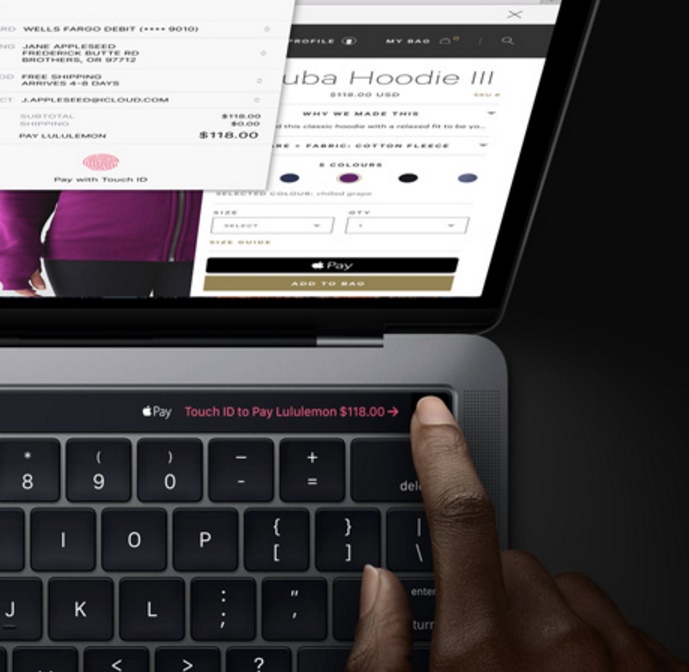
It’s official, the newly unveiled MacBook Pro has a Touch-ID fingerprint reader. This means a number of things:
first, MacBook users will be able to unlock their Macs in the same way as they do with their iPhones and iPads. Second: Apple Pay-enabled websites will be able to accept payments from Safari on macOS Sierra, with, or without an Apple Watch to mediate the authentication process. Third, macOS applications will soon embrace Touch-ID support, which means that banking apps, and pretty much anything that requires secure authentication, will eventually support Touch-ID.
When using Touch-ID to unlock an iPhone or an iPad, the fingerprint information is stored directly on a microchip, instead of the device’s main storage, for obvious reasons, as any skilled hacker would be able to steal any bit of information on a local storage drive, almost effortlessly. Biometric data is typically stored within a separate chip. In most new Windows 10 PCs for instance, biometric data is stored in certain specific areas of an Intel processor, 6th generation or newer. On older MacBooks, prior to its latest version unveiled this week, there was no provision in regard to storing biometric information, as Touch-ID was yet to be considered as a viable way to unlock a laptop.
As of the latest MacBook Pro, a new T1 chip was developed to control the Touch-ID sensor embedded into the TouchBar, as well as managing multiple fingerprints to allow multiple IDs to log into the device.
The T1 isn’t a CPU in the typical sense of the world, but it does bring to MacBook users a feature called Secure Enclave, which has been present in iPhones and iPads for a few years, since the the Apple A7 chip.
Secure Enclave in the T1 chip works in a similar way as on an iPad Pro, which means that it includes an unextractable key, imprinted during the manufacturing process, which is used for a number of tasks, including decryption of messages between end-to-end encryption supportive apps. Previously, MacBooks used to store that key on the hard drive, due to requirements enforced by third party chip manufacturers. With the implementation of the T1 chip, such requirement has been lifted, and owners of the latest MAcBook Pro will be able to enjoy the ability to instantly authenticate and switch between multiple Apple IDs, securely.
Ready to shop?
If you are looking for the perfect MacBook, PortableOne has you covered with a great selection of Apple MacBooks, as well as the newly unveiled 13 inch and 15 inch MacBook Pro with TouchBar.